Peppers are the easiest thing in the world to freeze. They need no blanching whatsoever. Wash, dry, cut up, and put flat in freezer bags! See how to freeze peppers so that you can enjoy in stir-fries, soups, and other meals through the winter!
Advertisement
Peppers are such a lovely fruit. They come in many different colors, sizes, and degrees of heat. Did you know: A green pepper is just an unripe one—give it time and it will turn red, orange, purple, yellow or chocolate brown!

Regular peppers are a delicious addition to a veggie dip; they have a distinctive crunch and a beautiful sweetness (if ripe). Stir-fried peppers and onions are phenomenal with hamburgers, hot dogs, sausages and steaks. They also begin my soups and are a great start for a chicken or steak stir-fry.
A Couple Growing Tips
- Peppers like it fairly hot. They germinate between 70 F and 95 F, and will not germinate below 55 F. However, they won’t set fruit if it is TOO hot. Nighttime temperatures below 60 F or above 75 F can reduce fruit set.
- When planting, I place peppers fairly close together—an open hand’s width apart seems to be ideal.
- There’s an old wives’ tale about putting matchbooks in the planting hole and it seems to work for me. If you don’t have matchbooks around, what this really comes down to is an extra boost of phosporous. Bone meal or blood meal will do it, too. Or, peppers respond well to a traditional phosphorus fertilizer. Just avoid too much nitrogen which will promote lush vegetative growth but fewer fruits.
- If the fruits get heavy, they can sometimes need support. I stake tall varieties for earlier and heavier harvest.
- Peppers need an even supply of moisture, whether you’re watering or getting the moisture from rain. Uneven watering may cause blossom end rot (the end turns black).
Freezing Peppers
If frost threatens before the entire crop has matured, pick the entire plant out of the ground and wash the roots. These can then be hung upside down in a warmer place (finished porches work well) and the fruits will ripen. They may wrinkle a bit, but they still taste spectacular.
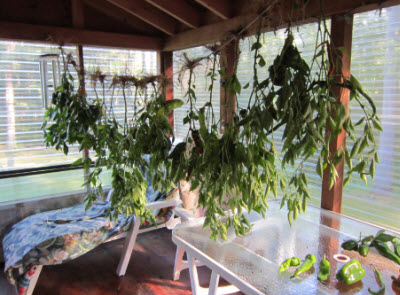
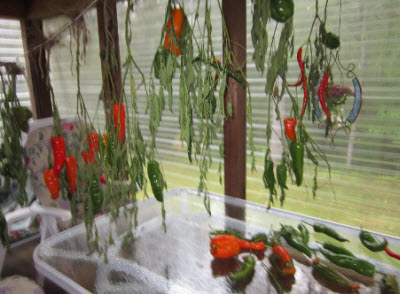
Peppers are the easiest thing in the world to freeze. They need no blanching whatsoever.
Just wash in cool water and dry thoroughly. Then remove the stems, seeds and membranes. Cut or dice peppers to size you want.
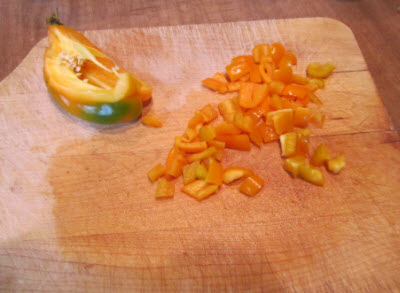
For peppers, I just pack the pieces right into freezer-safe zip-top bags, laying flat so that they will stack nicely in the freezer. I tend to use a lot of peppers during the year so I try to fill quite a few quart bags in season.
Some folks will spread the cut pappers on a tray so they’re not touching each other, then freeze till firm. And then transfer to freezer bags with all the air pressed out or to a vacuum-sealed bag. I do the tray method with blueberries so they don’t freeze in globs, but find this isn’t necessary with peppers. Your call.
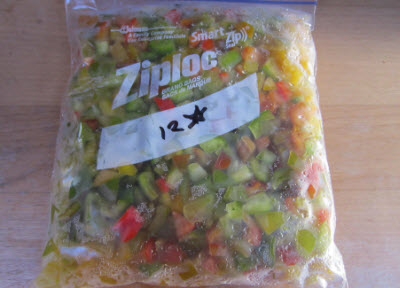
When it is time to use them, I can break off a large or small bunch and toss them directly into the pan. Most of the time, an onion or two is already there slowly frying in coconut oil (and a dash of salt) until soft. I like to wait until the oil begins to turn the color of the peppers (about 20 to 30 minutes) before continuing with my recipe. This ensures that both the onions and the peppers are soft and delicious.
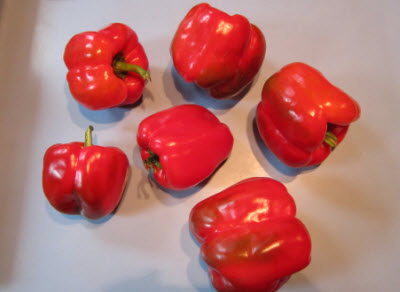
I freeze much of my harvest! Whether you’re a gardener or just don’t want to throw away food, see my tips for freezing Brussels sprouts.
















Comments